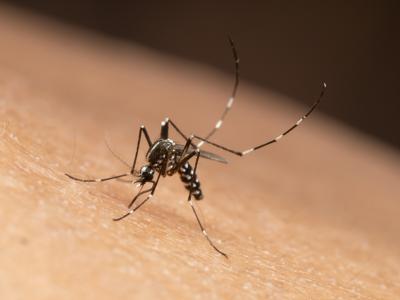Mar 30, 2012 (CIDRAP News) – Influenza activity in the United States—while never very high this season—showed signs of decline in data reported today by the Centers for Disease Control and Prevention (CDC).
Three states had high flu activity for the week ending Mar 24, the CDC said, down from four the week before. And the proportion of outpatient visits for flu-like illness was 2.0%, a drop from 2.4% the week before, when the nation was at the national baseline.
The proportion of deaths attributable to pneumonia and influenza (P&I) was also below the epidemic threshold, but the country saw four new pediatric flu deaths, according to the update.
Of 4,624 respiratory specimens tested during the week, 908 (19.6%) were positive for influenza. But that percentage varied considerably by CDC region, with the region comprising Illinois, Indiana, Michigan, Minnesota, Ohio, and Wisconsin reporting the highest percentage, at 56.8% (but down from 60.7% the week before).
Of the 908 specimens typed, 809 (89.1%) were influenza A strains, while 99 (10.9%) were influenza B. Of the 513 viruses subtyped, 378 (73.7%) were H3N2 and 135 (26.3%) were pandemic 2009 H1N1 (pH1N1). These percentages are similar to those for previous weeks.
P&E deaths accounted for 7.8% of all deaths reported, which was just below the epidemic threshold of 7.9%. The four new pediatric deaths were all caused by influenza A, with one from pH1N1 and the other from unknown influenza A strains. They bring the season's total to 12, compared with 122 for 2010-11 and 282 for 2009-10.
Idaho, Illinois, and Oregon reported high flu activity, while no states reported moderate activity and six states (Arkansas, California, Nevada, Texas, Utah, and Vermont) logged low activity. The rest of the country experienced minimal flu activity.
Sixteen states reported widespread influenza, 21 had regional activity, 9 saw local activity, and 4 reported sporadic activity. During the previous week those numbers were 20, 20, 2, and 8, respectively.
Globally, flu activity seems to be reaching its peak or is tapering, according to the World Health Organization (WHO) today.
Of the 15,214 flu viruses tested from Mar 4 to Mar 17, 11,559 (76%) were influenza A and 3,655 (24%) influenza B. Of the subtyped influenza A viruses, 85% were H3N2 and 15% were pH1N1.
Other highlights from WHO data:
- Influenza B activity was high in a number of countries and was the predominant strain in Canada and China.
- H3N2 predominated in Europe, with increasing co-circulation of influenza B in some nations.
- pH1N1 viruses remained the predominant strain in Mexico.
- Guatemala saw increased flu activity, with pH1N1 the main circulating subtype.
- H3N2 and B virus influenza activity remained high in Asia.
See also:
Mar 30 CDC flu update
Mar 30 WHO flu activity report
Mar 30 WHO flu epidemiology update




















